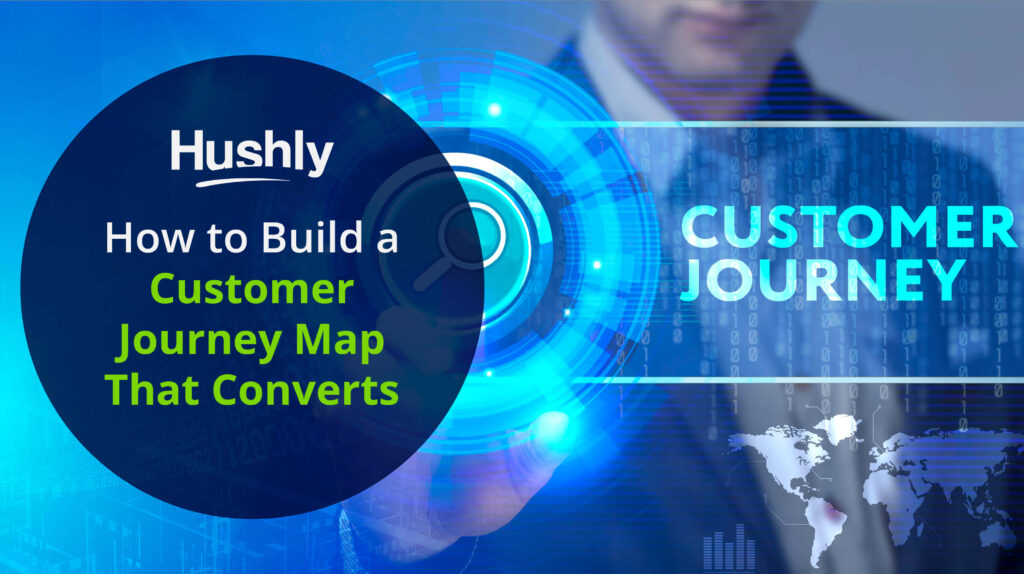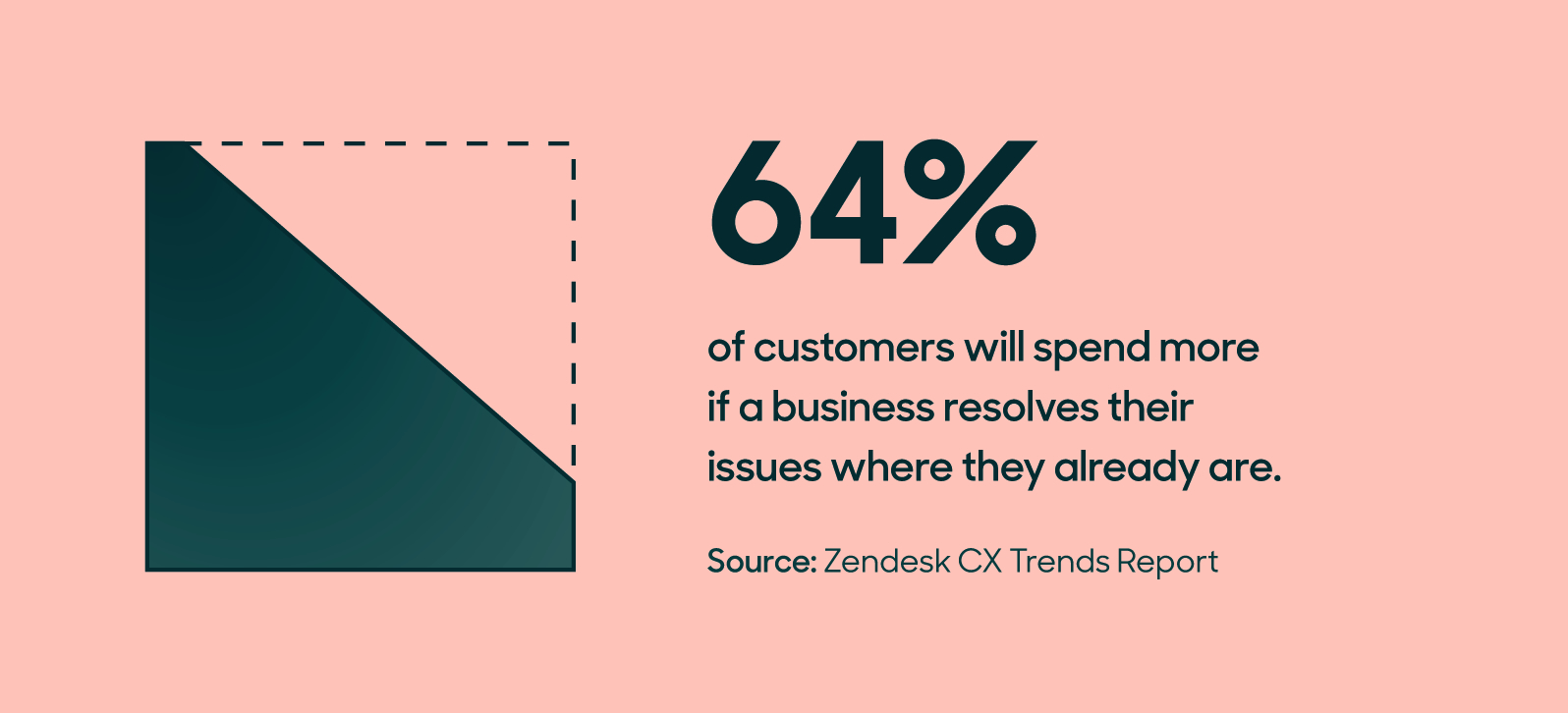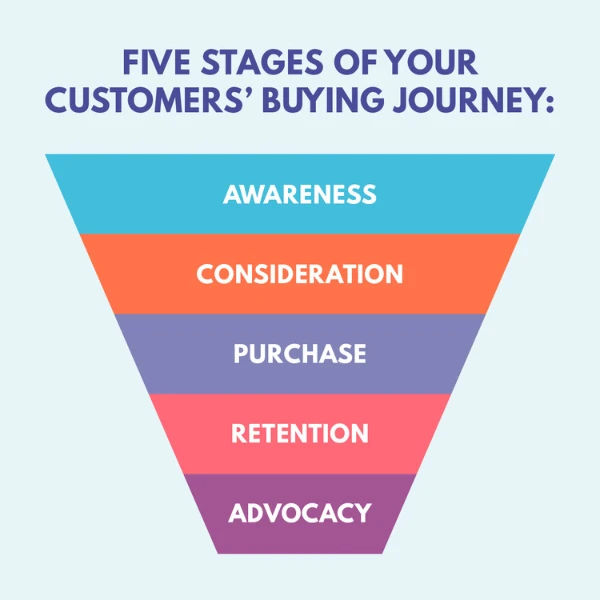Filters
Content Type
Topic
How to Build a Customer Journey Map That Converts
Buyers don’t follow a straight line from awareness to purchase. They research, compare, and engage with brands across multiple touchpoints before deciding. To consistently turn prospects into loyal customers, you must understand that journey, which is where customer journey mapping comes in.
A well-structured customer journey map helps you visualize how buyers interact with your business, from when they discover your brand to long after the sale. More importantly, it allows you to identify ways to improve the experience, remove friction, and guide buyers toward conversion. In this article, we’ll cover customer journey mapping, why it’s important, the stages involved, and the tools you can use to build a map that drives results.

What is Customer Journey Mapping?
Customer journey mapping is a visual representation of each interaction a customer has with your brand. It includes the buyer’s actions, thoughts, and emotions across all touchpoints, whether browsing your website, opening an email, reading reviews, or speaking with a sales rep.
Instead of examining customer behavior in isolation, customer journey mapping brings everything together in a single framework. This allows you to see where customers encounter roadblocks, where they engage most deeply, and where opportunities exist to influence decision-making.
Why is Customer Journey Mapping Important?
Companies often make costly mistakes without a clear understanding of the buyer’s path. They focus only on conversions, ignoring customers’ more minor yet equally essential actions, like clicking a product page, searching for reviews, or watching a demo video.
Customer journey mapping is essential for businesses because it helps you:
- See the Big Picture: Understand how every touchpoint contributes to the customer experience.
- Identify Friction Points: Pinpoint where buyers drop off or lose interest.
- Deliver Personalization: Provide content and offers tailored to each stage of the journey.
- Align Teams: Get sales, marketing, and customer success working toward the same customer-focused goals.
When you understand the conversions and the micro-actions buyers take, you can design a seamless journey that feels effortless and trustworthy.
5 Benefits of Customer Journey Mapping
Done well, customer journey mapping offers several measurable benefits. We’ve outlined five of them below so you can see why it’s important to take advantage of this process.
1. Improved Customer Experience
You can proactively fix problems like confusing navigation or unclear messaging before they cost you sales. When you provide a flawless user experience, people will be more inclined to stick around, and you’ll be less likely to see your bounce rate soar.
2. Higher Conversion Rates
By delivering the right message at the right time, you nudge customers closer to a buying decision. Part of the customer journey is tailoring your message to where the audience is, so you aren’t overwhelming them before they’re ready to buy.

Source: Zendesk
When they are ready to purchase, data shows 64% of customers will spend more if a business resolves their issues where they already are.
3. Stronger Customer Loyalty
Mapping helps you see beyond the purchase, uncovering ways to improve onboarding, support, and long-term engagement. When you can increase customer loyalty, you’ll see repeat business and long-term success.
4. Better Use of Data
You can align customer behavior with business goals, making smarter decisions backed by real insights. There will be no more guessing since you’ll have first-party data to influence your choices.
5. More Efficient Marketing Spend
When you know which touchpoints matter most, you can direct resources where they deliver the most significant ROI. This ensures you aren’t wasting time and money on what’s not performing well.
The Five Customer Journey Stages
A customer journey mapping template breaks the process into five key stages, as shown in the graphic below from Growth Method. Understanding these is critical to designing a conversion-oriented journey.

Source: Growth Method
- Awareness: The customer initially becomes aware of a problem or opportunity and searches for solutions. This stage includes reading blogs, seeing ads, or asking for recommendations.
- Consideration: The customer researches possible solutions, compares vendors, and looks for information that builds trust. Case studies, webinars, and comparison guides play an essential role here.
- Purchase: The customer is prepared to make a purchase and narrow down options. Free trials, special offers, and product demos tip the scale.
- Retention: After the purchase, the focus shifts to onboarding, customer support, and product adoption. A smooth experience here reduces churn.
- Advocacy: Delighted customers become promoters, writing reviews, sharing referrals, and advocating for your brand.
Each stage involves unique actions, emotions, and needs. Mapping these accurately ensures your strategy supports the customer every step of the way.
Now, let’s look at a simple customer journey mapping example for a B2B software company:
- A prospect finds a blog post on LinkedIn about solving a common industry challenge.
- They sign up for a webinar and read a case study showcasing success with your software.
- After engaging with a demo video, they request a free trial through your website and purchase.
- Post-purchase, they receive onboarding emails and access to a knowledge base.
- Satisfied with the product, they share their positive experience in a review.
Each action along this path provides valuable insight, from clicking the LinkedIn post to requesting the demo. Tracking and analyzing these actions, not just the trial sign-up, makes the journey map actionable.
What to Consider When Building a Customer Journey Map
To build an effective journey map, you need to go beyond guesswork. Here are the key considerations:
- Data Over Assumptions: Use analytics, surveys, and customer feedback to understand real behavior.
- Multiple Personas: Different customer types may have different journeys. Create separate maps for accuracy.
- Emotional Touchpoints: Consider what customers do and how they feel during each interaction.
- Cross-Channel Interactions: Customers move across email, social, search, and direct sales. Include every relevant channel.
- Granularity of Actions: Don’t only track purchases. Actions like clicking, searching, scrolling, and abandoning carts are equally important in shaping the journey.
The last point is crucial. Many marketers focus only on conversions, but an accurate customer journey map captures every micro-interaction. These “breadcrumbs” reveal intent, preferences, and pain points that can make or break the path to purchase.
Tools and Software for Customer Journey Mapping
Several tools can help build and manage journey maps, but one stands out for its ability to capture all buyer actions, not just conversions. That tool is Hushly.
Unlike traditional platforms, Hushly tracks and stores all activity on your website, including clicks, searches, page visits, and more. You don’t just see who converts; you understand why and how they got there. With this data, you can build a stronger, more accurate customer journey mapping framework. Hushly helps marketers design experiences that truly resonate by capturing micro-actions that other tools overlook.
Other customer journey mapping tools include:
- Lucidchart: Great for visually mapping out the stages and touchpoints of the journey.
- Smaply: A specialized journey mapping tool that includes persona building and stakeholder maps.
When choosing customer journey mapping tools, look for platforms that integrate with your CRM and analytics systems. The goal is to capture a complete picture of buyer behavior across every touchpoint.
Let Hushly Help with Customer Journey Mapping
Customer journey mapping is no longer optional. It’s an essential strategy for understanding buyer behavior, creating seamless experiences, and driving conversions. By capturing the big conversion moments and the smaller, everyday actions buyers take, you can uncover opportunities to engage more effectively.
With tools like Hushly, you can go beyond surface-level insights to build a journey map that reflects how customers interact with your brand. Pair that with a solid framework, accurate data, and a focus on all five journey stages, and you’ll be equipped to design a customer journey that doesn’t just look good on paper but actually converts.
Want to experience Hushly for yourself? Book a demo today.

The post How to Build a Customer Journey Map That Converts appeared first on Hushly.


